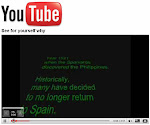
Christmas is undoubtedly the best and most expected holiday in the Philippines. It’s not a myth nor an over rate thing. See for yourself or you may ask those who experienced it first hand.
What makes Christmas in the Philippines unique and special is the heartwarming atmosphere connected to homecoming of migrants and the energy devoted by activity organizers.
Yearly Giant Lantern Festival and every province’s Christmas display contribute as well. As always, no amount of calamity and turmoil could stop Filipinos from observing Christmas. It even surpassed the changing and challenging times.
Chrismas for many Filipinos start as early as the first day of September, of which they call the start of “ber” months. Decorations and playing of Christmas songs start on these months wherein most media programs play a big part and a countdown is observe.
As the night began to lengthen and wheather become colder, Flipinos start to crave for “bibingka” and “puto bumbong” (Philippine known Christmas rice cake recipe). These are delicacies among other favorites. These are traditionally served on banana leaves topped with butter or margarine and grated coconut meat.
What makes Christmas in the Philippines unique and special is the heartwarming atmosphere connected to homecoming of migrants and the energy devoted by activity organizers.
Yearly Giant Lantern Festival and every province’s Christmas display contribute as well. As always, no amount of calamity and turmoil could stop Filipinos from observing Christmas. It even surpassed the changing and challenging times.
Chrismas for many Filipinos start as early as the first day of September, of which they call the start of “ber” months. Decorations and playing of Christmas songs start on these months wherein most media programs play a big part and a countdown is observe.
As the night began to lengthen and wheather become colder, Flipinos start to crave for “bibingka” and “puto bumbong” (Philippine known Christmas rice cake recipe). These are delicacies among other favorites. These are traditionally served on banana leaves topped with butter or margarine and grated coconut meat.
All sorts of colorful lighted lanterns and Christmas tree sparks their blinker lights at night in both residential and commercial places. You won’t find a province with no Christmas tree and lighted display especially during December. Pampanga is called the Christmas capital of the Philippines because it pioneered the extravagant and creative lighted display.
Shopping is something to look forward to during Christmas season. Philippines have globally competitive malls, including Tiangge (booth type of stores) that offers cheaper item. Of course restaurants, various food stores entertainmenet venues are jampack especially on weekends.
Starting December 1, Christmas parties are held almost every wherefrom Schools to companies. The 13th month pay is what most employees anticipate starting November. Many are on a vacation mood, though there are industries that require people to work during the holidays (e.g. Call Center firms and Technical Service Providers).
Starting December 16, a large portion of the population would flock to attend Catholic mass at their local congregation. We call it “simbang gabi.” Simultanously, gang of little kids and young at heart sings Christmas carols from house to house. Many provide gift of coins and candies. Previously, adults and organizations do this for fund raising but present laws now restrict due reports of abuse.
Christmas Eve is often celebrated by families at home enjoying a Christmas dinner at midnight. Although, there are those who prefer to enjoy it on bars, restaurants or park. This somehow reflects how bonded Filipino families are. This tradition is called Noche Buena. Rich and poor alike observe this Filipino practice in a form of reunion with prayer of thanks giving, dining and gift giving. Filipino values are clearly highlighted during this period as the children and grand children express their love and warm appreciation to the love and care of their elders. Although Philippines are divided by religion, dialects and location, Christmas is the tie that binds.
After December 25, Christmas celebration continues. Filipino families or friends again gather on December 31 for the Media Noche or midnight meal (New Year’s Eve). Along with the preparation of food, many can’t help but prepare firecrackers as well. This is in line with the influence of the Chinese culture. As mentioned, this means to greet the New Year with loud noises and sounds of merrymaking and to drive away bad spirits. In the provinces, old folks uses bamboo canon. Alternative methods of merrymaking include whisle horn for kids (“torotot), banging on pots and pans and blowing on car horns. Folk beliefs also include encouraging children to jump at the stroke of midnight so that they would grow up tall, displaying circular fruit and wearing clothes with dots and wearing other circular designs to symbolize money. Another is eating twelve grapes at 12 midnight for good luck in the twelve months of the year and having 12 round shape furits. All are too many. Nonetheless, all these are folk belief for good year to come.
The “Three Kings” is the last Philippines’ Christmas was obviously derived from “Feast of Three Kings.” This is traditionally commemorated on Jan. 6 but is now celebrated on the first Sunday after the New Year.
What are you waiting for, come visit the Philippines and experience Christmas with us.
Kindly view the video presentation for a clear view:
http://www.youtube.com/watch?v=aHBxyz4AEeY
.jpg)